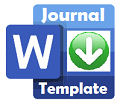Media Literacy: Smart in Making Islamic Content in Social Media in Sei Dadap District, Asahan District
DOI:
https://doi.org/10.35309/alinsyiroh.v9i2.6946Keywords:
Media Literacy, , Islamic Content, Social Media, Da'wahAbstract
The rapid development of media and communication technology requires audiences to have a number of knowledge and skills called media literacy, in order to use the media correctly. The main target is teenagers. Teenagers as active users of social media need to get attention in the use of social media. Teenagers are the age of self-discovery, high curiosity, and need various education that is used as a reference. But it is very unfortunate if a teenager abuses social media, accesses and consumes media content with various social activities from various Black Mail accounts that display pornographic content / posts, provocations, and many other things that are misused into adolescent consumption that is not appropriate for his age.To prevent these negative things, teenagers need to be equipped with journalistic knowledge so that they can create Islamic creative content as an adaptive step from the use of social media. This ability needs to be possessed by teenagers, especially teenagers from Sei Dadap District. The approach used is qualitative with a descriptive nature. The results showed that Media Literacy activities in Sei Dadap District had a positive impact so that teenagers were able to choose and choose good and true news. Then it is possible to create creative Islamic content on social media as an adaptive step from the use of social media. Creating creative Islamic content on social media is also a da'wah strategy that all social media users are capable of doing. The results of this study are expected to encourage further research in the form of elaboration of media literacy theories and concepts so that they can be translated into the Media Literacy Education curriculum. ÂReferences
Abdul Wahid dan Dhinar Aji Pratomo, Masyarakat dan Teks Media, (Malang: UB Press, 2017)
Akhmad Rifa’I, E-Dakwah dalam Pesantren Virtual, Millah IZ, No 1 2009 h 35
Bus. Horiz., vol. 53, no. 1, pp. 59–68, 2010, doi: 10.1016/j.bushor.2009.09.003Nashiruddin Baidan, Metodologi Penafsiran Al-Qur’an, (Yogyakarta: Pustaka Pelajar, 2012) cet. IV h 124
Dudung, A., Hasanah, U., Salman, I., Priyanto, S., & Ramdhan, T. (2022). Achievement of student graduates: The role of e-readiness, e-learning and e-book. International Journal of Data and Network Science, 6(2), 375-382. http:// dx.doi.org/10.5267/j.ijdns.2021.12.017
Her Romli Pasrah “Kode Etik Jurnalistik dan Kebebbasan Pers dalam Prespektif Islam, Jurnal Dakwah IX, No 2, 2008 h 17
Iftitah Jafar, Konsep Berita dalam Al-Qur’an (Implikasinya dalam sistem Pemberitaan di Media Sosial), Jurnal Jurnalisa 3 No 1, 2017, 15
Iswandi Syahputra, Jurnalistik Infotaiment : Kanca Baru Jurnalkistik dalam Industri Telivisi (Yogyakarta : Pilar Media, 2006
Juliana Kurniawati dan Siti Baroro, Literasi Media Digital mahasiswa, Unicersitas Muhammadiyah Bengkulu, Jurnal Komunikator 8 No 2 2016, h 51
M. Kaplan and M. Haenlein, “Users of the world, unite! The challenges and opportunities of Social Media
Nasiri dkk, kapita Selekta Dakwah ed, Muhammad Huda, Nuril, Zamzani, Cetakan 1 (Surabaya : Kopertais 4 Press, 2016) h 9
Puji Rianto, Media Baru, Visi Khlayak Aktif dan Urgensi Literasi Media, Jurnal Komunikasi Ikatan sarjana Komunikasi Indonesia 1 No 2, 2016 h 90
Qosim Nurheha Dzulhadi, Islam Sebagai Agama dan Peradaban, Tsaqaf,11 No. 1 (2015), h 151
Waryono Abdul Ghafur, Dakwah Bil- Hikmah di Era Informasi dan Globalisasi Berdakwah di Masyarakat Baru , Junal Ilmu Dakwah 34 No.2, 2014 h 236
Downloads
Published
How to Cite
Issue
Section
License
Copyright (c) 2023 Al-Insyiroh: Jurnal Studi Keislaman

This work is licensed under a Creative Commons Attribution-ShareAlike 4.0 International License.

This work is licensed under a Creative Commons Attribution-ShareAlike 4.0 International License.









